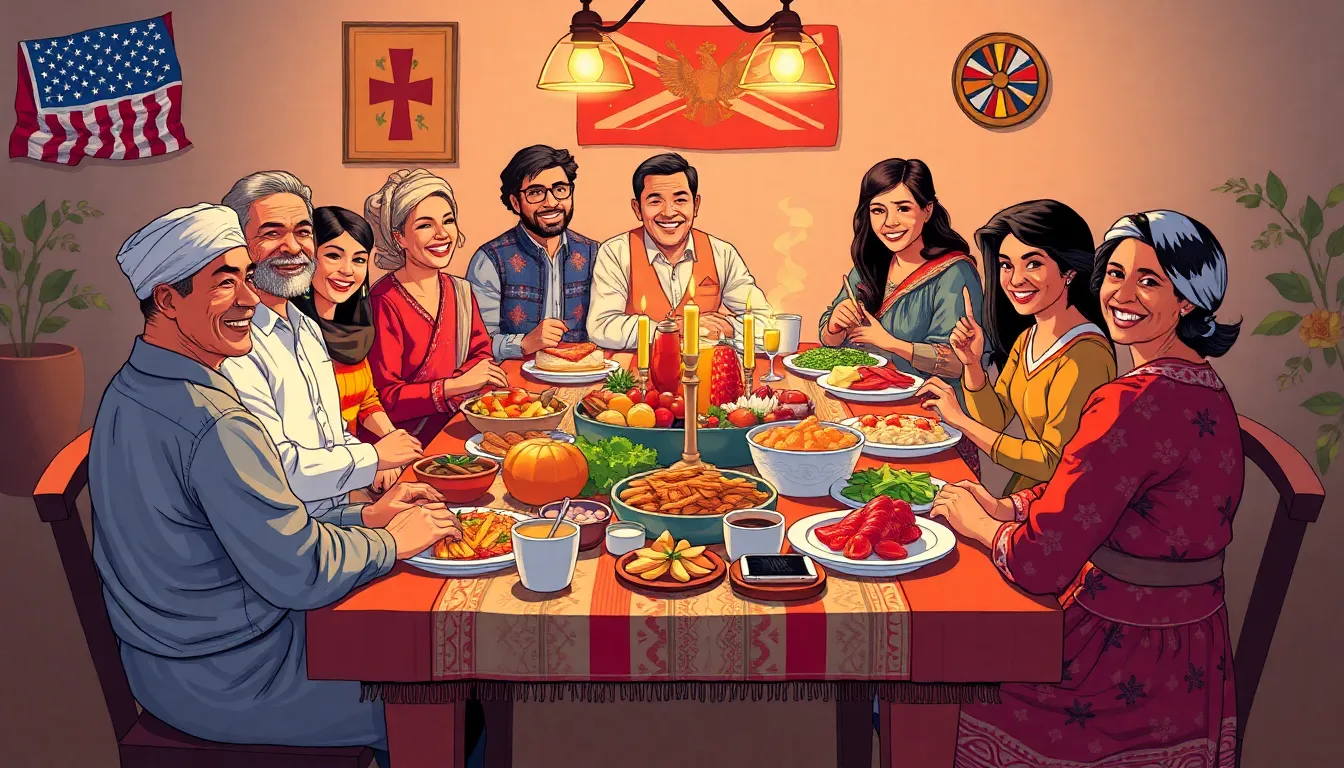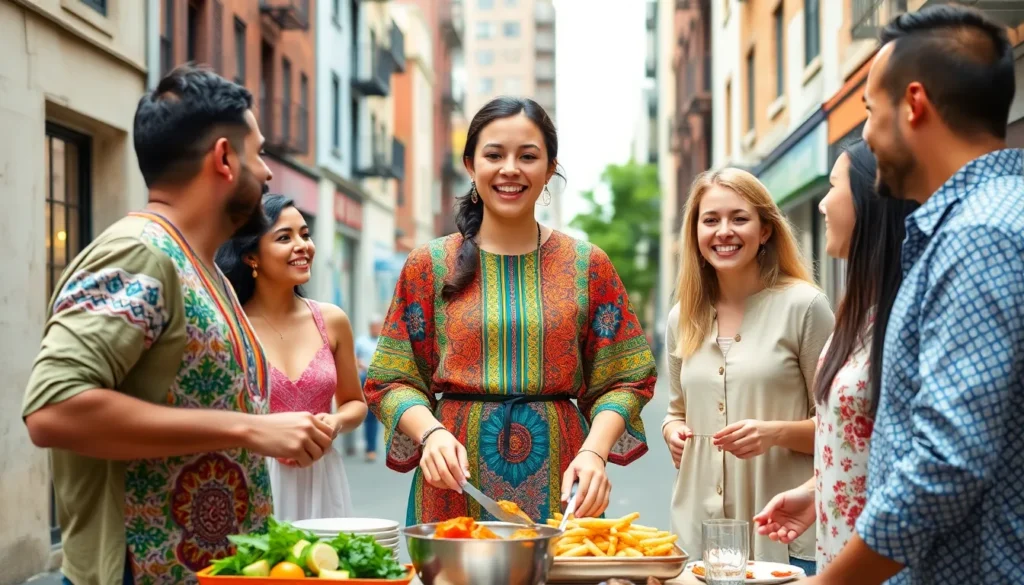Culture shapes everything from the way people dress to the music they groove to, and understanding its meaning can unlock a treasure chest of insights about human behavior. Ever wondered why your friend insists on wearing socks with sandals? Or why certain foods are celebrated while others are shunned? It all boils down to cultural meaning—a fascinating tapestry woven from shared beliefs, values, and practices.
Table of Contents
ToggleUnderstanding Cultural Meaning
Understanding cultural meaning reveals how shared beliefs and values shape individual behaviors and preferences. Cultural context influences everything from communication styles to food consumption. Individuals often interpret actions and symbols differently based on their cultural backgrounds. For example, a gesture perceived as polite in one culture may be offensive in another.
Fashion choices reflect deeper cultural meanings. Wearing certain styles can signify status, group identity, or personal expression. In this sense, understanding fashion within a cultural framework helps decode social dynamics. Similarly, food preferences are closely tied to cultural identity, with certain dishes serving as comfort food or symbols of heritage.
Cultural rituals further illustrate the significance of shared meaning. Celebrations like holidays or rites of passage often hold profound importance and convey values of a community. These events provide insight into cultural priorities and ethical values. Language plays a crucial role as well, where specific phrases or idioms encapsulate cultural nuances.
Symbols are powerful tools for expressing cultural meaning. Flags, religious icons, and even colors carry distinct significance that varies across cultures. Awareness of these symbols allows for deeper connections and communication between individuals from different backgrounds.
Cultural meaning is dynamic and evolves over time. Societal changes can reshape beliefs and practices, highlighting the adaptability of culture. Engaging with cultural meaning fosters inclusivity and understanding, bridging gaps between diverse groups.
The Importance Of Cultural Meaning

Cultural meaning plays a critical role in shaping personal and collective identities. Individuals connect with their heritage through colors, styles, and traditions, creating a sense of belonging. Common themes within cultures reflect values, offering insights into social norms and aspirations.
Shaping Identity
Identity formation is influenced by cultural elements. Clothing choices signify not only personal style but also group affiliation. Food preferences connect individuals to their ancestry, fostering pride in traditions. Holidays and rituals further enhance identity by creating shared experiences. Symbols, such as flags or religious icons, evoke strong emotional ties and represent collective history. Understanding these elements clarifies how cultures mold individual perceptions and social identities.
Influencing Behavior
Cultural meaning directly impacts decision-making and behavioral patterns. It shapes preferences, from entertainment to consumption habits. In social interactions, cultural norms dictate communication styles, affecting personal behavior in diverse settings. Rituals and traditions guide behaviors during significant life events, ensuring continuity across generations. By recognizing these influences, one gains better insight into why certain actions resonate at a community level. Cultivating cultural awareness enhances social cohesion and promotes respectful engagement among diverse populations.
Examples Of Cultural Meaning
Cultural meaning manifests through various forms, with symbols and rituals being two prominent examples.
Symbols In Different Cultures
Symbols carry unique meanings across cultures. For instance, the lotus flower represents purity and enlightenment in many Asian cultures, while in Western societies, a dove symbolizes peace and hope. Colors also convey significant messages; for example, red signifies happiness and good fortune in China, contrasting with its association with caution in other places. Clothing items, such as the kilt in Scotland, reflect national pride and heritage. Beyond mere illustrations, symbols encapsulate stories, beliefs, and values, emphasizing the connection individuals feel to their cultural identity.
Rituals And Traditions
Rituals and traditions reinforce cultural meaning. Celebrations like Diwali in India highlight the triumph of light over darkness, bringing families and communities together. In the United States, Thanksgiving signifies gratitude and family unity, showcasing shared values across diverse backgrounds. Rites of passage, such as bar and bat mitzvahs in Jewish culture, mark significant life events and transitions. These rituals foster a sense of belonging and continuity, connecting generations to their cultural roots. Traditions also provide opportunities for communal expression, enhancing social bonds within communities.
Analyzing Cultural Meaning
Analyzing cultural meaning reveals insights into societal dynamics and individual identities. Scholars emphasize that symbols represent shared beliefs and values. For instance, the lotus flower embodies purity in Asian traditions while the dove signifies peace within Western contexts. Colors also communicate cultural messages, with red illustrating joy in China and caution in other regions.
Rituals represent another crucial aspect of cultural meaning. Diwali celebrates the victory of light over darkness in India, whereas Thanksgiving honors gratitude in the United States. Both practices foster connections among generations, reinforcing community bonds. Festivals create an atmosphere for shared experiences, enhancing social cohesion and cultural continuity.
Fashion choices manifest underlying cultural meanings. Styles highlight status or group identity; wearing traditional attire during celebrations reflects cultural heritage. Food preferences also play a critical role; certain dishes evoke nostalgia and signify belonging. These culinary traditions reinforce identity, linking individuals to their ancestry.
Language contributes significantly to the expression of cultural nuances. Expressions vary greatly across cultures, affecting communication styles in social interactions. Understanding these linguistic differences fosters respect and awareness among diverse populations. Cultural meaning guides not just personal decisions but collective behaviors as well.
Symbols, colors, and rituals continually evolve, reflecting changing societal values. Communities adapt traditions to modern contexts, illustrating the fluid nature of cultural meaning. This adaptability strengthens connections among individuals, fostering pride in shared heritage and identity.
Cultural meaning serves as a vital thread weaving through the fabric of human interaction and identity. It shapes how individuals express themselves through fashion and food while influencing their connections to heritage and community. By understanding these cultural nuances, one can appreciate the rich diversity that exists within societies.
Recognizing the significance of symbols and rituals fosters respect and engagement among different cultures. As cultural meanings continue to evolve, they highlight the importance of maintaining traditions while adapting to modern influences. This dynamic interplay not only enriches personal identities but also strengthens social bonds, promoting a more cohesive and inclusive world.




